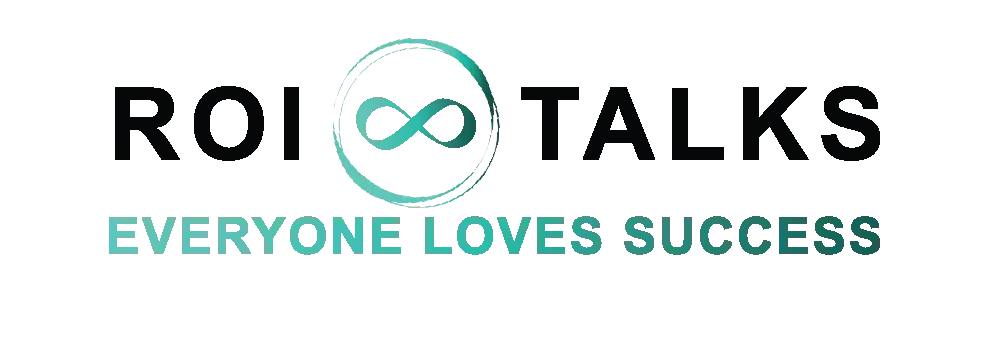Everyone Loves Success
Roi Talks Blog
Tactical Prioritisation & Action Pack: How to Think, Decide, and Act Clearly Under Pressure
In workplaces, calm is rare.
Projects shift suddenly, clients demand answers instantly, and teams scramble to manage competing priorities. The result is stress, reactivity, and confusion — not intelligence.
Tactical Intelligence is the ability to think clearly, decide wisely, and act calmly under pressure. It’s not about slowing down; it’s about seeing clearly when others can’t.
The Tactical Prioritisation & Action Pack is a structured set of tools that gives people exactly that power. It equips teams with four field-tested frameworks to bring order, focus, and composure to daily decisions. Each one comes from real-world disciplines leadership, innovation, operations, and communication where clarity isn’t optional.
1. Urgent–Important Matrix: The Discipline of Focus
Origin and Background: Developed by U.S. President Dwight D. Eisenhower and later popularised by Stephen Covey, this matrix remains one of the simplest yet most transformative leadership tools.
What It Does: It divides all tasks into four categories urgent and important, not urgent but important, urgent but not important, and neither urgent nor important.
Workplace Example: A manager drowning in meetings realises that many are “urgent but not important.” By blocking time for long-term planning (important but not urgent), she finally leads strategically instead of firefighting.
Purpose in Tactical Intelligence: This matrix trains teams to pause before reacting. When used daily, it replaces panic with purposeful action.
2. ICE Scoring (Impact, Confidence, Ease): The Logic of Smart Choices
Origin and Background: Created by Sean Ellis, founder of GrowthHackers.com, ICE Scoring emerged from the startup world as a way to prioritise experiments objectively.
What It Does: Each potential action is rated from 1 to 10 on three factors.
Impact (how much it moves results)
Confidence (how sure we are it will work)
Ease (how simple it is to execute)
Adding or multiplying these scores shows which ideas deliver the highest value with the least strain.
Workplace Example: A product team has ten improvement ideas. Instead of endless debate, they score each idea together. The highest-scoring option becomes the next sprint. The decision feels fair, fast, and factual.
Purpose in Tactical Intelligence: It takes emotion and hierarchy out of decision-making. Teams stop guessing and start agreeing.
3. Decision Triangle: The Structure of Ownership
Origin and Background: Adapted from operational leadership and emergency response frameworks, the Decision Triangle defines who acts now, who supports, and who escalates.
What It Does: It organises responsibility into three clear zones:
Control: What I can handle directly.
Team: What requires joint effort.
Escalate: What needs higher approval or authority.
Workplace Example: When a key system fails, a supervisor takes immediate control of safety protocols, delegates recovery tasks to the team, and escalates the issue to IT leadership. No confusion, no overlap just clarity and flow.
Purpose in Tactical Intelligence: It creates confidence through boundaries. When everyone knows their role, decisions move faster and coordination improves.
4. 3–5–10 Communication Script: The Calm Voice Under Pressure
Origin and Background: Drawn from aviation, leadership, and crisis-communication training, this method combines three universal ideas the power of three for clarity, five short supporting facts for credibility, and the discipline to speak calmly in about ten seconds.
What It Does: It helps people deliver clear, factual updates instead of long, emotional explanations. The structure is simple:
Three key points - the essence of your message.
Up to five short facts - the evidence.
Ten seconds - the ideal duration for calm delivery.
Workplace Example: A team lead briefs senior management: “Three points: supplier delay, backup activated, client informed. Facts: shipment rerouted, delivery confirmed for Friday, cost unchanged, team monitoring, next update at 3 p.m.” The message is finished before anxiety can begin.
Purpose in Tactical Intelligence: It builds composure through structure. The more structured the message, the steadier the voice.
How the Four Tools Work Together
Each tool solves a different kind of workplace pressure:
The Urgent–Important Matrix clarifies what matters.
ICE Scoring aligns the team on what to do first.
The Decision Triangle defines who acts where.
The 3–5–10 Script ensures communication stays calm and clear.
Together, they form a complete decision ecosystem. One that turns chaos into coordination. In Tactical Intelligence workshops, participants use these tools in real-world business scenarios. This is not theory; they apply structure to everyday challenges such as project delays, client issues, staff conflicts, and sudden operational changes.
By the end, the difference is visible. Teams stop reacting and start reasoning. Meetings become shorter, updates sharper, and collaboration smoother. People make decisions with clarity instead of emotion.
The Real Goal: Calm as a Competitive Advantage
Tactical Intelligence is not about being slow or overly cautious. It’s about being deliberate in the middle of motion. These tools help leaders, managers, and teams think like pilots, steady hands in turbulent air.
When pressure rises, structure creates safety. The Tactical Prioritisation & Action Pack is that structure. It turns complexity into calm, urgency into understanding, and decision-making into a shared discipline.
This article is part of the Tactical Intelligence – Creative Problem Solving & Decision Making series, focused on building clarity, composure, and courage in real-world business environments.
To explore how the Tactical Intelligence workshop can help your teams please connect with us.

ROI TALKS™
Marina Plaza - Office 1004 -1006
Dubai Marina, Dubai, UAE